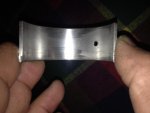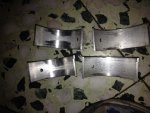aero grade hylomar is in a tube you can also use silicon sealer for the base seals.
Liner protrusion is impotant i use the thicker shims most times and the liner clamps are not 100percent necessary if you are fitting the head right away fit the inner pistons first turn the crank to bottom pulls the liners down as you turn fit pistons 1 and4 then fit the head
Liner protrusion is impotant i use the thicker shims most times and the liner clamps are not 100percent necessary if you are fitting the head right away fit the inner pistons first turn the crank to bottom pulls the liners down as you turn fit pistons 1 and4 then fit the head


